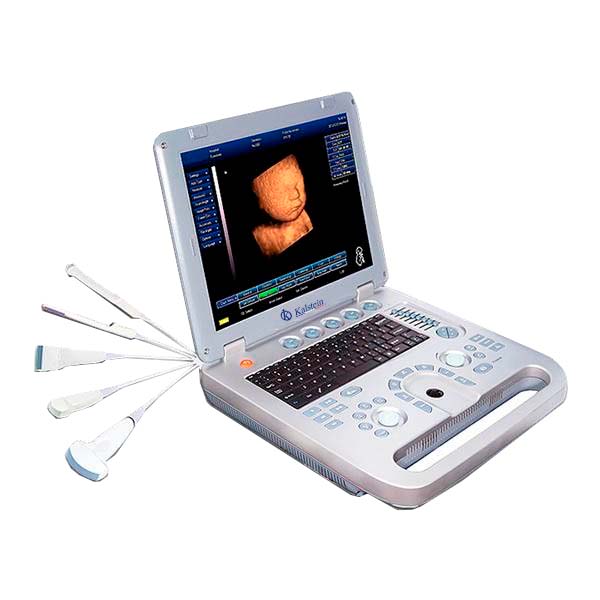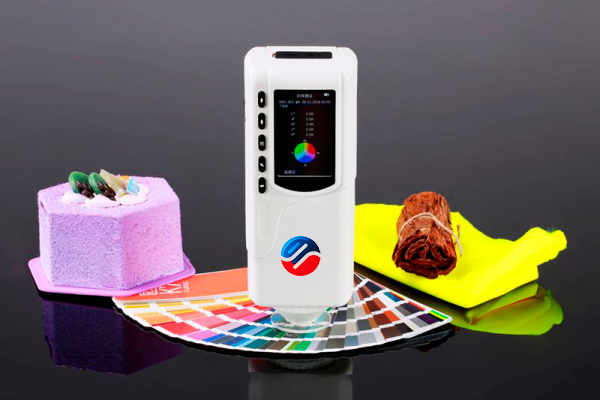An ultrasound scanner is a medical device that uses ultrasound waves to obtain diagnostic images. These waves are generated by a device called a transducer, which in addition to producing the ultrasound waves is also able to detect the echoes reflected by the ultrasound, thus producing images of the tissues and organs.
The transducer picks up the echo of sound waves and a computer turns it into an image that appears on the screen. In most cases, the elements that make up the transducer are made of ceramic glass called piezoelectrics. These are able to produce sound waves when an electric field passes through them, and they are also able to operate in the reverse direction, producing an electric field when it receives sound waves.
How is an ultrasound scanner composed?
An ultrasound scanner consists of a beam forming unit, a central processing unit, a user interface (keyboard, control panel, trackball), several probes (transducers or scanning heads), one or more video screens, some type of recording device and an electrical power supply system.
To obtain the images, the probe is placed on the skin (after applying an acoustic coupling gel) or inserted into a body cavity. As mentioned, ultrasonic probes have elements made of piezoelectric materials (materials that convert electrical energy into acoustic energy and vice versa). When the ultrasonic energy emitted from the probe is reflected by the tissue, the transducer receives some of these reflections (echoes) and transforms them back into electrical signals. These signals are processed and transformed into an image.
Are there risks of using ultrasound scanners?
Diagnostic ultrasound is commonly considered safe because it does not produce ionizing radiation such as that emitted by X-rays. However, it is important to note that ultrasound can generate some biological effects in the human body under specific conditions and environments.
That is why regulators suggest that ultrasound equipment should operate within acceptable limits, and urge that such equipment be used only when there is a real medical need
How should I maintain an ultrasound scanner?
The maintenance of ultrasound scanners is very important for the proper functioning of these equipment. It should be done regularly and as necessary. This medical device has several circuit boards, extensive diagnostic capabilities for technical service and very complex operating software, it is recommended that only trained personnel take care of the technical service of the system.
For cleaning and maintenance of the ultrasound system and peripheral accessories, thorough cleaning is often required, which is essential for peripheral equipment components because they contain electromechanical devices. If such devices are exposed to an excessive and constant level of dust and ambient humidity, their performance and reliability will decrease. It is very important to clean the transducers that are used with the ultrasound system. Cleaning procedures vary according to the different types of transducers and the intended use.
Medical applications of ultrasound scanner
An ultrasound scanner is used in radiology departments and other clinical departments, as well as in independent imaging centers and private medical offices, mainly for vascular and gynecological-obstetric applications.
Some equipment includes additional transducers to facilitate more specialized diagnostic procedures, such as cardiac, vascular, endovaginal, endorrectal, or small-part scanning (e.g., thyroid, breast, scrotum, prostate).
What do we offer you in Kalstein?
Kalstein is a company MANUFACTURER of medical and laboratory equipment of the highest quality and the best technology at the best prices in the market, so you can make your purchase confidently with us, knowing that you have the service and advice of a company specialized in the field and committed to innovation. This time we present our 3D4D GYN YR05147 Obstetric Ultrasound. This novel medical device has the following characteristics:
- PC-based ultrasound, which can be connected to any printer of any brand.
- Integrated 3D software, free to activate during the New Promotion.
- Built-in battery, which can operate continuously for at least 3 hours when powered off.
- 6 types of automatic reports and measurements for obstetrics/gynecology, cardiac, urology, small organs, muscle, vascular, etc.
- Large 15-inch LED monitor.
- Under use, relative tips will appear at the bottom of the screen to guide your next operation
- Multi-Language Function: English, Chinese, Spanish and Portuguese, Russian, Arabic, French.
- Superb picture quality and 175 degree viewing angle.
For more information, we invite you to take a look:HERE




